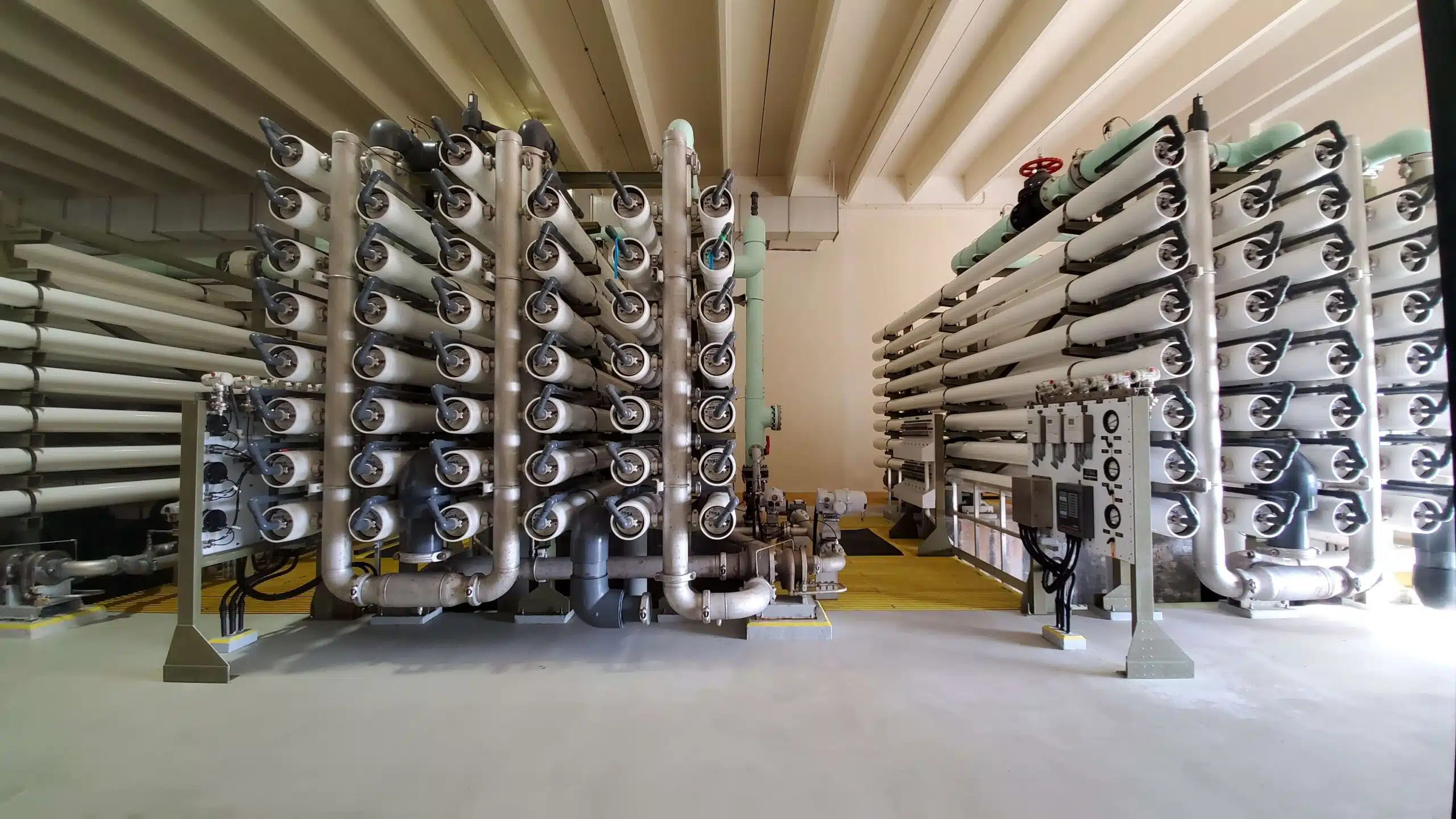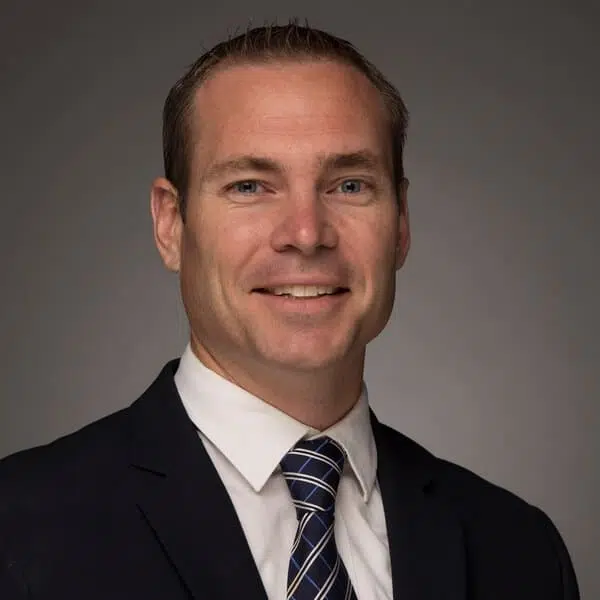- April 17, 2023
- Perspectives, Trending Topics
A Dive into the 2023 AWWA/AMTA Membrane Technology Conference and Exhibition


Raul
Dominguez-Ramirez, EIT
Water/Wastewater Analyst

Tatiana Konstantis, PE
Water/Wastewater Engineer

Lance Littrell,
PE
Water/Wastewater Engineer
The American Water Works Association (AWWA) and the American Membrane Technology Association (AMTA) collaborate annually to host the Membrane Technology Conference and Exhibition. This year, water and wastewater experts learned more about per-and polyfluoroalkyl substances (PFAS) removal, membrane bioreactors (MBRs), water reuse strategies, and more. If you missed the 2023 Membrane Technology Conference and Exhibition, we gathered the key takeaways from our own presentations and other sessions to help you stay up to speed on new regulations, research, and methodology.
Developing New Water Treatment Technologies Around the World
In the opening general session, Harry Seah, DCE(O) of PUB, Singapore’s National Water Agency, and Christopher Gasson, publisher of Global Water Intelligence, discussed the critical role of membranes in Singapore’s Four National Taps and differences in how membrane technology is deployed around the world.
Singapore is known for some of the most innovative and advanced water treatment technologies in the world and has been facing a critical water shortage for many years. Additionally, Singapore expects its current 430-million-gallons-a-day (MGD) water demand to greatly increase in the next 30 years. To overcome these challenges, the country has developed a robust portfolio of water supply options, referred to as the Four National Taps, which involve collecting, treating, and reusing water from various sources to ensure a sustainable and reliable water supply. The Four National Taps include the following:
- Local catchment water collected in rainwater reservoirs
- Imported water from neighboring countries
- Highly purified wastewater (known as NEWater) that is treated with advanced membrane technologies and utilized for multiple applications, including drinking water
- Desalinated water produced using membrane technologies to treat seawater
Membrane technologies, such as reverse osmosis and microfiltration, are used in the production of both NEWater and desalinated water—removing impurities and contaminants from the water and making it safe for human consumption. Membrane filtration is also utilized in the treatment of local catchment water to remove impurities. Singapore’s innovative use of membrane technologies has set the tone for the industry, and water/wastewater experts should consider how this use of technology can be applied to address water shortage challenges in other geographic areas.
Rising Tides of Water Reuse
Water reuse was a consistent theme at the conference and is becoming increasingly important as global water resources become more strained due to population growth as well as environmental and economic factors. In fact, it is estimated that the United States will increase its volume of reused water by almost 40% by 2027, which will increase reuse usage by approximately 2 billion additional gallons per day.
Historically, water reuse applications have been limited to piloting and testing phases, but now experts are implementing larger scale water reuse systems to meet current challenges and water reuse goals around the globe. Some of the recent trends and technologies in water reuse include indirect potable reuse—treating wastewater to meet or exceed potable drinking water standards and then returning the water to a drinking water supply—and direct potable reuse, which involves treating wastewater to meet and exceed potable drinking water standards for direct potable distribution.
Innovating with Membrane Bioreactors
Despite the challenges associated with MBRs, the opportunities for water reuse, decentralized treatment, and nutrient recovery make MBRs a proven technology for sustainable wastewater treatment. MBRs also make capacity expansions more viable for municipalities that are landlocked with no space to build additional treatment facilities or maintain higher-level treatment capabilities.
Our team had the opportunity to tour the Beaver Creek Wastewater Treatment Plant (WWTP) located in Powell, Tennessee during the 2023 Membrane Technology Conference. The WWTP is a 12-MGD facility utilizing both MBR treatment and conventional treatment technology. Treated flow from both treatment processes is blended and disinfected via UV disinfection prior to discharging to Beaver Creek. MBRs both reduce overall treatment footprints as well as provide excellent solids removal, which was a key takeaway emphasized at the site visit.
Advancing High-Pressure Membranes
High-pressure membranes such as reverse osmosis and nanofiltration membranes are continually evolving, with upgraded membrane material configurations, contaminant selective removal, and system designs being developed to address the challenges of fouling, scaling, and energy consumption. These advances are making high-pressure membrane systems more efficient, cost-effective, and sustainable.
There is a focus on high-pressure membranes from the desalination market and in regions with water shortages that lack an adequate aquifer supply. Particularly outside of the United States, water/wastewater experts have started leveraging high-pressure membranes to increase their water supply, contributing to the ever-growing international reverse osmosis market. We expect that this common technology will become more consistently implemented and United States demand for high-pressure membranes will likely be expanding to serve brackish and seawater sources.
Removing PFAS
PFAS in drinking water and wastewater have been increasingly identified as “forever chemicals” that provoke public health concern, and strategies for their removal were a key highlight of our presentations at the 2023 Membrane Technology conference.
MBR Utilization in the Pretreatment Stage of Wastewater PFAS Mitigation
With all the focus on removing PFAS from drinking water, attention is also being placed on PFAS removal from wastewater, including greater detail in understanding PFAS levels entering the plant and being discharged out of the plant. PFAS molecules are not removed with conventional or advanced wastewater treatment; however, membrane bioreactors do act as a pretreatment step for technologies—including granular activated carbon, ion exchange, nanofiltration, and reverse osmosis—that do remove PFAS from wastewater. These PFAS removal technologies are particularly effective when partnered downstream of MBRs for PFAS removal.
MBRs stand out from other wastewater treatment processes in their ability to pretreat wastewater upstream of PFAS mitigation/remediation technologies, which have specific pretreatment standards to optimize operations and service life. For instance, prior to wastewater effluent reaching these PFAS removal technologies, pretreatment is completed by mitigating scaling and removing items such as total suspended solids, oil, grease, manganese, iron, oxidants, and microbes. MBRs have a high efficiency in removing these types of contaminants.
When using MBRs in the pretreatment stage of the PFAS removal process, experts should ensure that the MBR and PFAS mitigation/remediation technologies are utilized prior to the disinfection stage to avoid the negative impact of oxidants on these technologies. Additionally, it is also suggested that stakeholders pilot test the use of MBRs with PFAS removal technologies to discover if the pretreatment level needs to be adjusted.
PFAS Removal Regulation Updates
The current regulatory landscape of PFAS removal at wastewater treatment plants involves the governance of landfill and underground injection disposal methods as well as destruction methods like thermal treatment with hazardous waste combustion technologies. For instance, Class I wells used for underground injection must have a complete barrier between the injection area and any aquifers used for drinking water to ensure that PFAS contamination does not travel outside of the injection zone.
More PFAS regulations are upcoming later in 2023, and there is current discussion about utility impacts and staging determinations. Firstly, the EPA is determining whether to utilize the Comprehensive Environmental Response, Compensation, and Liability Act, which establishes standards and liability for hazardous waste, to classify PFAS types PFOA and PFOS as hazardous materials. The final determination, expected in the summer of 2023, would also affect offsite hauling, reporting, and other concentrate disposal methods like surface water discharge and wastewater treatment plants. In the meantime, deep injection wells are considered as effective technologies for contaminated liquid disposal, and zero liquid discharge is also a potential option to consider for complete water recovery and contaminant reduction.
Additionally, the EPA recently released the PFAS National Primary Drinking Water Regulation (NPDWR) that proposed an adjustment to PFAS maximum contaminant levels (MCLs) in drinking water. The proposed MCL for PFOA and PFOS is 4 parts per trillion and 1.0 (unitless) in the Hazard Index for other types of PFAS: PFNA, PFHxS, PFBS, and HFPO-DA. The PFAS NPDWR is expected to be finalized in 2023. It would adjust the PFAS MCL, mandate that public water systems institute detection of all mentioned types of PFAS, communicate publicly about the PFAS levels they detect, and mitigate/remediate these levels as needed to meet the new standards.
Stakeholders should maintain connections and conversations with local and federal regulators as these regulations roll out in order to determine planning for future facilities, the integration of new limits, and available funding sources for treatment upgrades.
Leveraging Low-Pressure Membrane Treatments
Low-pressure membrane treatment of surface water is a technology discussed at the 2023 Membrane Technology Conference that effectively removes microorganisms and produces high-quality drinking water. It has a smaller footprint and requires less chemical usage, but it also requires more frequent maintenance and can be more expensive to operate and maintain when compared to traditional surface water treatment methods.
Demands for improved water quality have pushed more low-pressure membrane projects into the industry, particularly from inland communities that are treating water from rivers and lakes. Some aquifers are using these low-pressure membranes for the removal of solids, and they can also remove some dissolved contaminants if the right chemistry is used. Additionally, ceramic membranes maintain high hydrophilicity compared to other traditional filtration methods and are able to operate at higher flux rates to produce a larger volume of treated water. When compared to traditional surface water treatment models, this type of treatment has a smaller footprint and requires less chemical usage, but it also requires more frequent maintenance and can be more expensive to operate and maintain.
Manufacturing Semiconductor Chips with Ultrapure Water
Another topic at the 2023 Membrane Technology conference was ultrapure water (UPW) production, which involves utilizing a portfolio of water purification technologies, from ultrafiltration to reverse osmosis to ion exchange. UPW is contaminant-free and has a variety of uses in industrial, pharmaceutical, and energy manufacturing. Semiconductor manufacturing processes in particular require UPW, and a lack of quality water can contribute to the chip shortage that has disrupted markets for the past several years.
The 2022 CHIPS Act seeks to address the 25% decline of the U.S. semiconductor manufacturing capacity share over the past several decades through investing in semiconductor funding, research, and production. This attempted boost in semiconductor production comes hand-in-hand with an additional need for UPW, and membranes are going to be a key gateway to increased UPW production because of their ability to finely filter water and remove contaminants. Additionally, membranes enhance the efficiency and small footprint of UPW production, which can help bring UPW levels up to increase semiconductor chip manufacturing magnitude.
About the Experts

Raul Dominguez-Ramirez, EIT
Raul has proven knowledge in water storage and conveyance methods and also has experience in developing water and wastewater master plans, assessing site impacts through hydrologic and hydraulic modeling, and designing water and wastewater treatment plants—including new plants or expansions, rehabilitations, or improvements to existing plants. Raul also has developed research focused on the interconnection of natural and synthetic biomaterials to develop novel porous polymeric networks for biomedical and tissue engineering applications.

Tatiana Konstantis, PE
A water project engineer, Tatiana has worked on various treatment design projects across Florida and Virginia, assisting in pilot studies, treatment assessment memorandums, and expansion design of water treatment plants. Tatiana’s experience spans a range of projects— a membrane pilot study and replacement for Port St. Lucie, microfiltration plant designs in Virginia and Puerto Rico, and reverse osmosis water treatment plant expansions across Florida.

Lance Littrell, PE
With more than two decades of experience in water treatment, Lance brings a broad range of treatment experience and practical membrane application for various treatment processes. Lance has served in multiple engineering and construction roles for reverse osmosis, microfiltration, and ultrafiltration treatment plants throughout the nation and abroad. Rooted in technical knowledge and hands-on experience, Lance understands the treatment technologies, their applications, and the leadership that our industry needs to respond to today's economic run, increasingly stringent regulations, emerging contaminants, and progression toward potable reuse.
